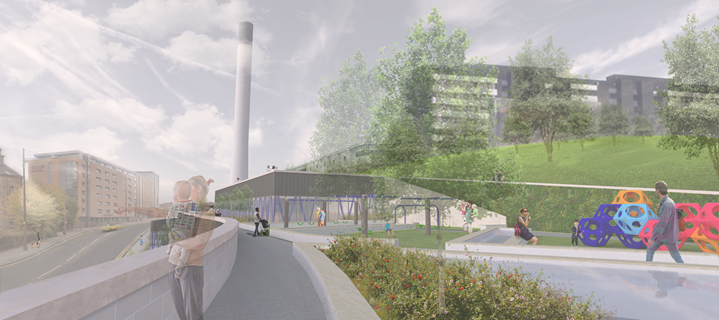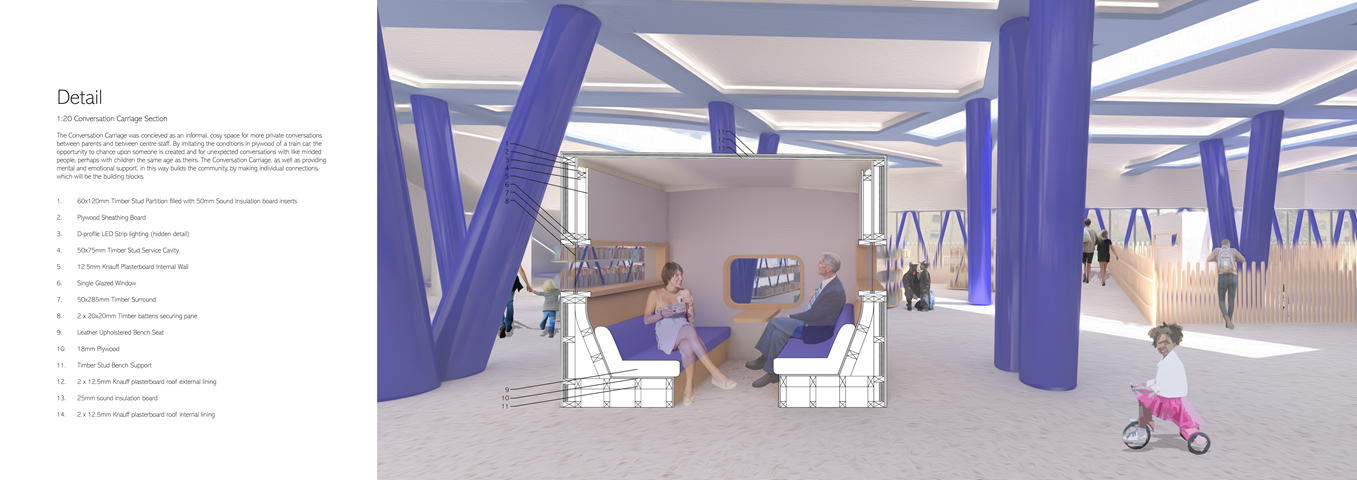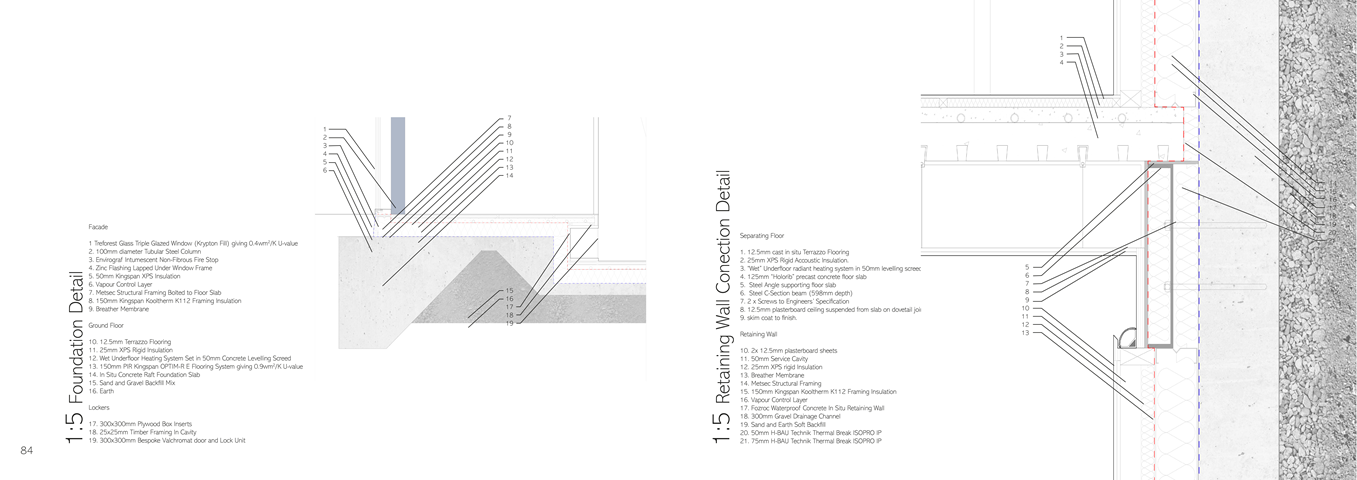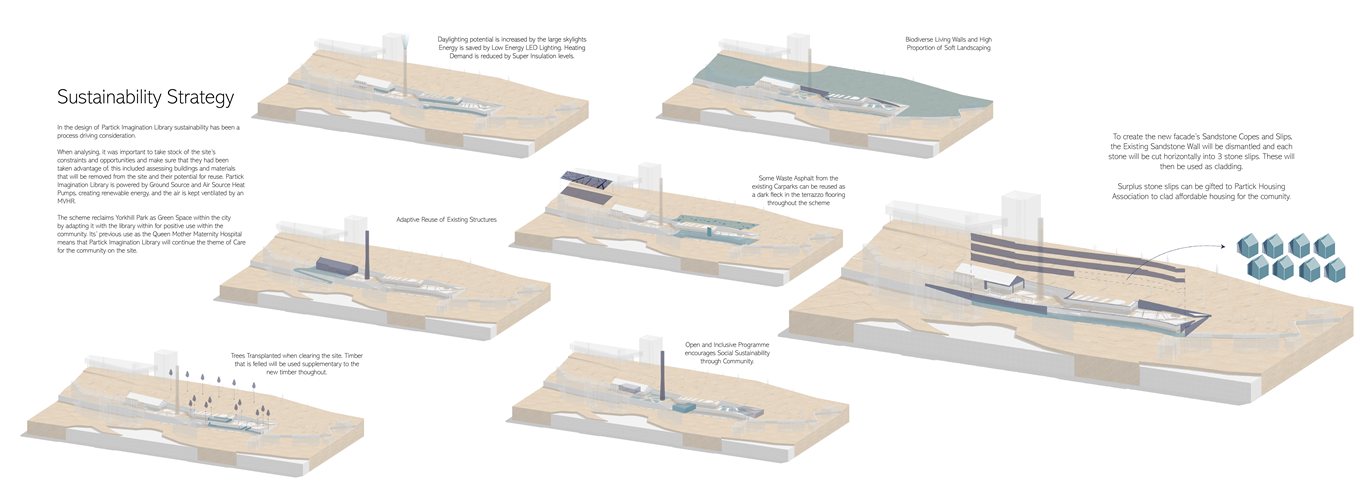Partick Imagination Library
To Care for a Community
I began my studies as an undergraduate at Strathclyde in 2016. This gave me the opportunity to interrogate my own, as well as society's perceptions of architecture and the construction industry. I firmly believe that architecture is for all and a societal shift is required so that it is seen as a necessity to the betterment of society rather than a luxury for the few that can afford it. At the end of Year 3, I undertook a Part 1 placement at MAST Architects and I recently graduated with a BSc Architectural Studies with First Class Honours in June 2021.
Community refers to a group of people who share something in common. A set of circumstances, a belief or a common interest that causes them to come together. Many find strength in community and for this reason, we have an architectural responsibility to facilitate the formation and strengthening of communities within public buildings and spaces. When researching community groups and projects, I discovered 'Dolly Parton's Imagination Library'. This organisation aims to inspire a love of reading in children aged 0-5 by gifting one book per month to disadvantaged children who may not otherwise have access to reading resources. As the organisation operates from Tennessee, their local partner is Partick Housing Association, who receive and distribute books on their behalf.
This project aims to conceive the 'Imagination Library' Typology by developing a programme that combines the functions of DPIL and their local partner organisation. This will create a set of spaces that provide a community for young families in Partick centred around the belief that everyone should have access to reading resources in every stage of their lives regardless of their position within society.

1:200 Landscaping And Curtilage Plan 1. Green Buffer to Old Dumbarton Road with Café Seating 2. Entrance Courtyard with Outdoor Gathering Stair 3. Roof Terrace with Rooflight Planters at the Park Level 4. Play Area 5. Community Beacon inside Repurposed Hospital Flue 6. Queen Mother Maternity Reading Green 7. Book Gifting and Distribution Building 8. Refuse and Community Recycling 9. Car Park
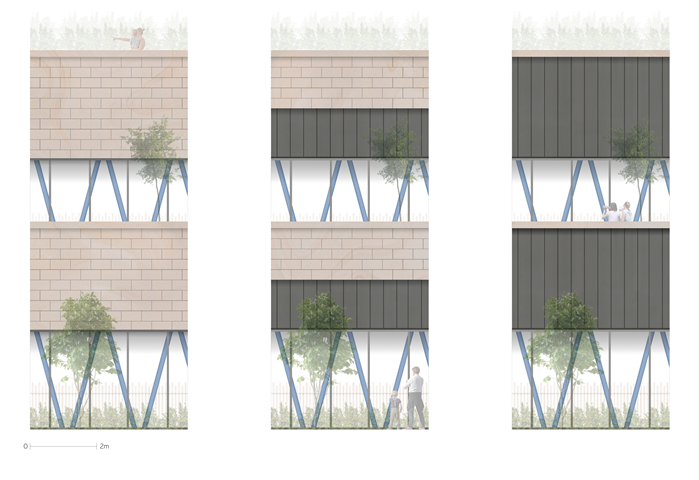
1:20 Façade Accent Testing These images were created to decide the extents of Standing Seam Zinc within the Repurposed Sandstone Slips as well as to investigate how they would interact with the structural columns. The third test with the most zinc was chosen as it created the most layering and depth.

1:500 Elevation to Old Dumbarton Road The façade is made mainly from stone slips formed from the existing on-site wall into which the new building embeds. Zinc Accents set within announce the programme within the wall sandstone. As the stone will match perfectly once weathered, the building should integrate with context as if it had always been there. In order to match the height datum of the existing wall, ceilings indoors have been raised to 4.5m which has resulted in better views to Benalder Bridge (the building’s physical connection in streetscape to Partick) from the Roofscape.
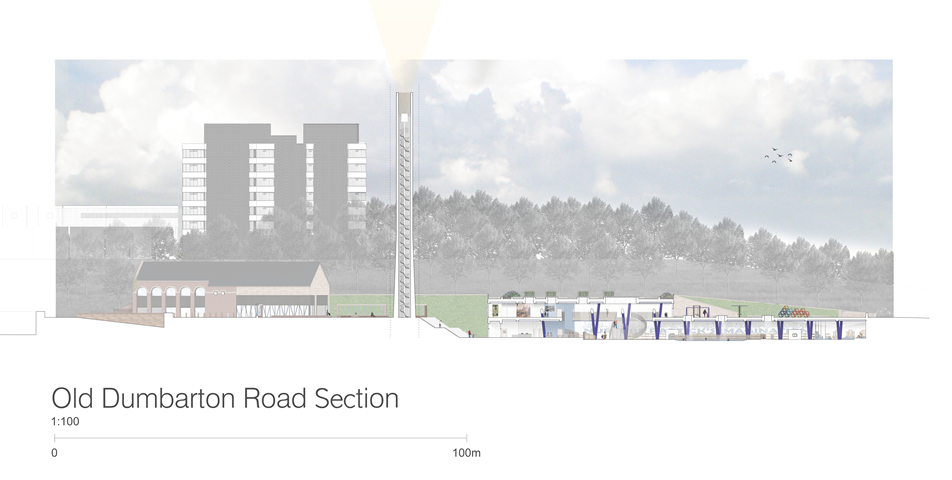
1:100 Section E-E The internal structure comprises a steel V-column grid rotated to 15° to keep parallel with the East Retaining Wall. It is painted to match the Railway Bridges in Partick, particularly because the nearest is the end of Ferry Road. The main internal stair was treated as a sculptural feature due to its location at the entrance to the main library space and it's prominence in plan. As the majority of the building envelope is north facing and embedded into the topography of Yorkhill, Rooflights were made 1m wide at a minimum everywhere to maximise daylighting potential throughout.
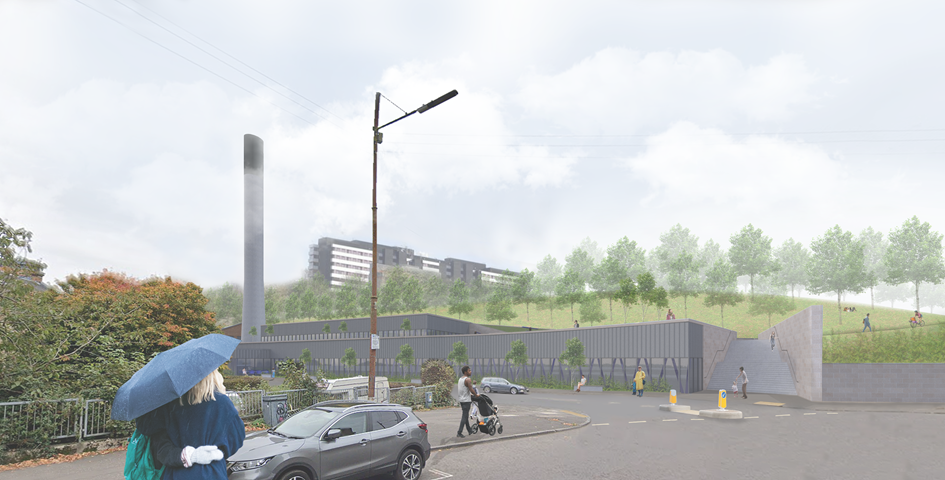
View from Benalder Street Bridge Initial analysis of Yorkhill Park, which the site is bound by, revealed a need for improved access and public realm. Therefore the access stairs were rotated to receive pedestrians from Partick and accentuate their desired path. The scheme will also provide disabled access to Yorkhill Park for the first time. A green buffer and internal balustrades will ensure privacy in the main library space and increase biodiversity on site.
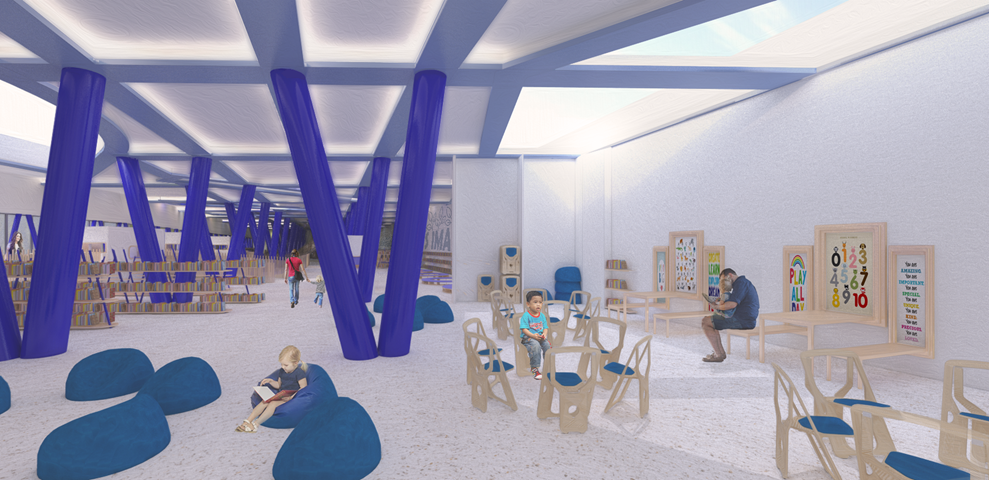
Flexible Workshop Space The Flexible workshopping space is designed to host School Trip Groups as well as everyday workshops for pre-school aged children that will be run by Centre Staff. As such the seating can be completely removed, folding away or stored in a bespoke unit built off of the retaining wall. A palate of light stained Larch is used for the furniture to maximise daylighting potential at the rear of the building.
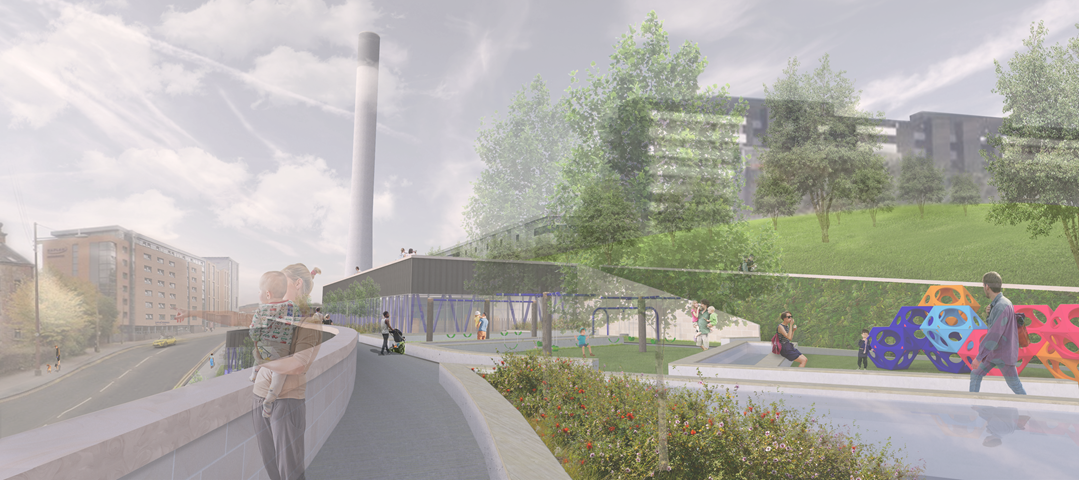
Play Area and Roofscape Traditionally, a day out to a play area is almost exclusively a children's activity, with parent(s) acting as chaperone, arriving at the park, finding a bench and sitting on the outskirts of the space on which to wait. Partick Imagination Library's play area is conceived so that parents as well as their children are located within the play space, with the aim to get parents more involved with play, or facilitate social interaction between parents of more independent children. The Living Walls and integrated Raised Planters continue the atmosphere of the neighbouring Park onto the building roofscape.
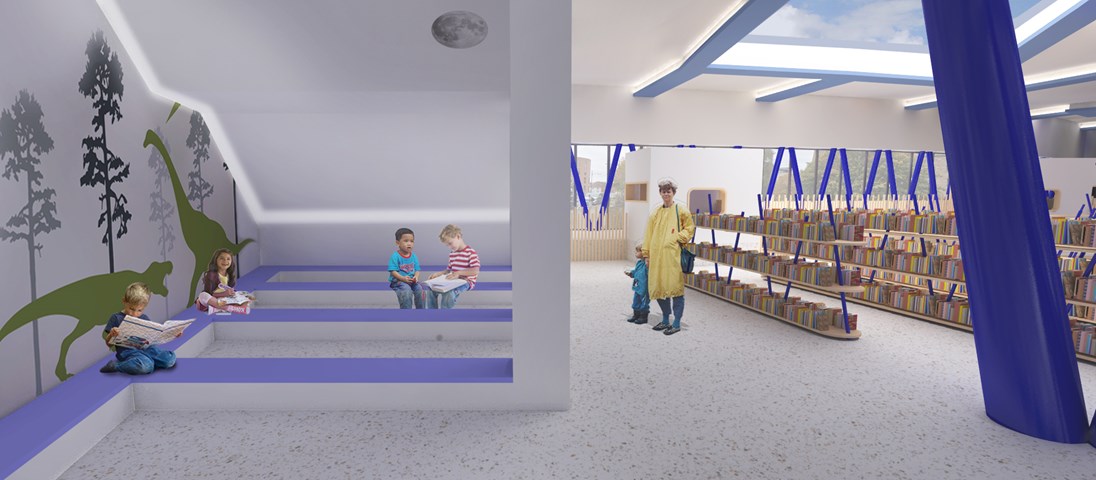
Reading Area for 4-5 year olds After the design of the external stair above, the lighting conditions beneath created an opportunity for a “secret cave” space at the West end of the ground floor plan. This means 4-5 Year Old Children are provided with a space whose atmosphere is evocative of storybook setting. The wall decals are intended to add to this effect. A hidden strip LED will illuminate the space while its discretion ensures retention of the imaginative atmosphere. In contrast, the book storage is in a more traditional Library format to help children make the transition to traditional libraries when they get older. The largest of the rooflights gives sky views from this area, opening up the internal experience while planting around will screen the books from afternoon sun.

Distribution Admin Space The Existing Building has been adapted to host the the Book Distribution related programme elements, thereby using the existing structure on site to portray the existing functions of the two organisations. The existing building has fell victim to a few unsympathetic extensions, which will be removed and brick partitions in the distribution building are formed from reclaimed brick kept aside during demolition. The glazed façade and additional dark blue steelwork provide a visual link both to the new façade elements and the rest of the scheme. Biophilic Design has been linked psychologically to stress relief, so the admin office includes plants within and a view to the living retaining wall and the new Reading Green it neighbours. This contributes to a relaxed atmosphere within the spacious office.
